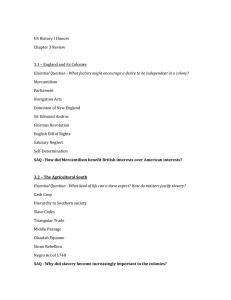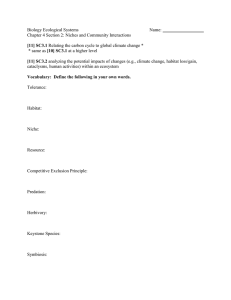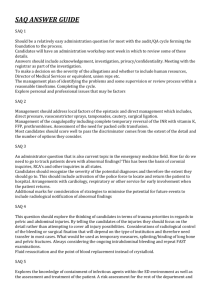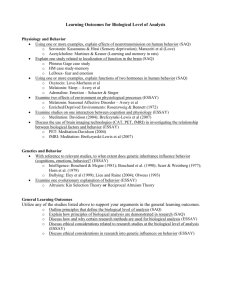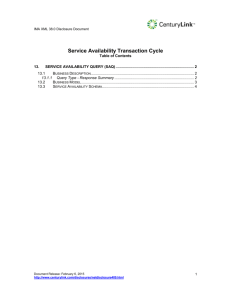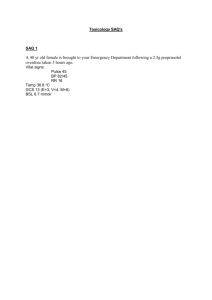SAQ 22, 27, 30
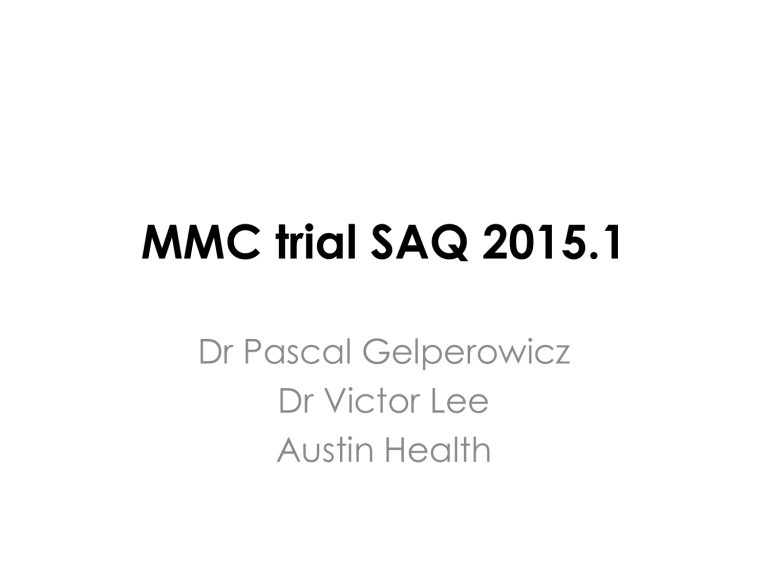
MMC trial SAQ 2015.1
Dr Pascal Gelperowicz
Dr Victor Lee
Austin Health
SAQ 22
A 13 year old boy has an syncopal episode whilst playing sport. There was no trauma. He is unconscious for one minute and there is no seizure activity during this time, nor evidence of a post-ictal phase.
His observations are as follows:
BP
HR
RR
O
2
GCS
105/70mmHg
90
18 saturations 99%
15
/min
/min on room air
An ECG is done and is shown on the page opposite.
SAQ 22
SAQ 22
1. List four (4) relevant findings on the
ECG.
SAQ 22
1. List four (4) relevant findings on the ECG.
i.
Left ventricular hypertrophy ii.
Non-specific global ST-segment depression (?c/w
LVH/LMCA but age 15) iii. aVR, V1, V2 ST segment elevation (?c/w LMCA but age
15) iv. P-wave abnormalities (large P-waves globally/retrograde P-wave V2) v. PR interval normal (i.e. no short PR) vi. Sinus rhythm (i.e. no arrhythmia) vii. Non-specific T-wave changes especially laterally (?c/w
LVH)
SAQ 22
2. What is the diagnosis?
3. List two (2) of the most important complications associated with this diagnosis.
SAQ 22
2. What is the diagnosis?
Hypertrophic Cardiomyopathy
3. List two (2) of the most important complications associated with this diagnosis.
i.
Ventricular arrhythmia ii.
Sudden death iii. Risk to offspring (genetic transmission) iv. Abnormal coronary arteries (ischaemia risk increased)
SAQ 22
4. List three (3) important management priorities during this current admission.
SAQ 22
4. List three (3) important management priorities during this current admission.
i. Telemetry/monitoring for arrhythmia* ii. Exclusion of valvular pathology/LVOT(echo)* iii. Parental counseling iv. Patient counseling re sport/activity v. Beta-blocker vi. Consideration for electrophysiological studies vii. Consideration for implantable defibrillator
SAQ 27
A 78 year old woman from a nursing home presents with generalised abdominal pain and vomiting for the past 24 hours.
Her observations are as follows:
BP
HR
RR
O
2
165/82 mmHg
90
20
/min
/min saturations 96% on room air
Temperature 36.2 °C
GCS 14 (E4, V4, M6) normal for patient
An AXR is taken and shows no obstruction.
Her chest x-ray is shown below:
SAQ 27
SAQ 27
1. What is the presumptive diagnosis?
2. List five (5) important features demonstrated on this x-ray. Include three (3) positive and two (2) negative findings.
SAQ 27
1.
What is the presumptive diagnosis?
Gastric volvulus (diaphragmatic hernia w/ obstruction)
2. List five (5) important features demonstrated on this x-ray. Include three (3) positive and two (2) negative findings.
+ Hiatus hernia
+ Multiple loops seen intrathoracic suggestive of volvulus
+ Air-fluid level seen within lower loop suggestive of obstruction
+ Some rightward mediastinal/tracheal shift suggestive of mass effect
- No gas under diaphragm - No mediastinal gas - No PTx
SAQ 27
3. List four (4) immediate management priorities.
4. What is the role of a nasogastric tube in this patient?
SAQ 27
3. List four (4) immediate management priorities.
i.
Ascertaining advanced care directives/NFR orders ii.
Analgesia – Opiate with appropriate dosing, e.g. Morphine 2.5 mg
IV prn iii.
Antiemetic – Ondansetron 4-8mg IV TDS or Metoclopramide10-
20mg IV QID iv.
IV fluids, correction of electrolytes v.
Surgical intervention
• accept conservative – gastroscopy
• accept aggressive - laparotomy if comment about nursing home
4. What is the role of a nasogastric tube in this patient?
Diagnostic but not therapeutic – unable to pass
SAQ 30
A 24 year old male presents with confusion after competing in a half marathon event.
His observations are as follows:
BP
HR
RR
O
95/60 mmHg
118 /min
24 /min saturations 98% on room air
2
Temperature 40.8 °C
GCS 13 (V3, E4, M6)
SAQ 30
1. What is the most likely diagnosis?
2. List four (4) important investigations for this diagnosis. Include a justification for each.
SAQ 30
1.
What is the most likely diagnosis?
Heat stroke
2. List four (4) important investigations for this diagnosis. Include a justification for each.
Total CK (rhabdomyolysis)*
Glucose (significant changes with heat stroke)
Coags (INRcorrelated to outcome)
VBG/ABG (electrolytes in particular + glu)
FBE
LFTs
Urinalysis (with myoglobin)
U&Es
ECG
CTB
(thrombocytopaenia/leukocytosis)
(significantorgandysfunction)
(hyperkalaemia, renalfailure)
(arrhythmias)
(exclude intracranial cause)
SAQ 30
3. List four (4) temperature control strategies.
SAQ 30
3. List four (4) temperature control strategies.
i.
Remove clothing ii.
Reduce ambient temperature (AC, lights off etc) iii. Cooled IV fluids iv. Cold misted spray / fans v. Ice packs to axillae / groin, etc. vi. Ice water bath (beware airway) vii. IDC cold washout
Focus on initial (sensible approach, i.e. not to start with ICC cooling!).
SAQ 30
4. List four (4) other immediate management priorities for this patient.
SAQ 30
4. List four (4) other immediate management priorities for this patient.
i.
Protect airway
• accept open airway / lateral position / airway adjuncts
• no need to intubate this patient but not error if choose this ii.
Glucose management to normoglycaemia
iii. IV fluid resuscitation(CSL/NS) – aggressive fluid therapy essential* iv. IDC insertion with UO > 2-3 ml/kg v. Establish NOK and communication vi. Early aggressive renal replacement therapy especially if ARF/UO low vii. ICU referral – recognition of high mortality viii. May require ECMO
Key messages
• Order in your head before committing to paper
• Scatter gun approach won’t work
• Scores can be aggregated down to
10
• If miss essential response then may only get max of say 2/4
• Pass score determined by standard setting
